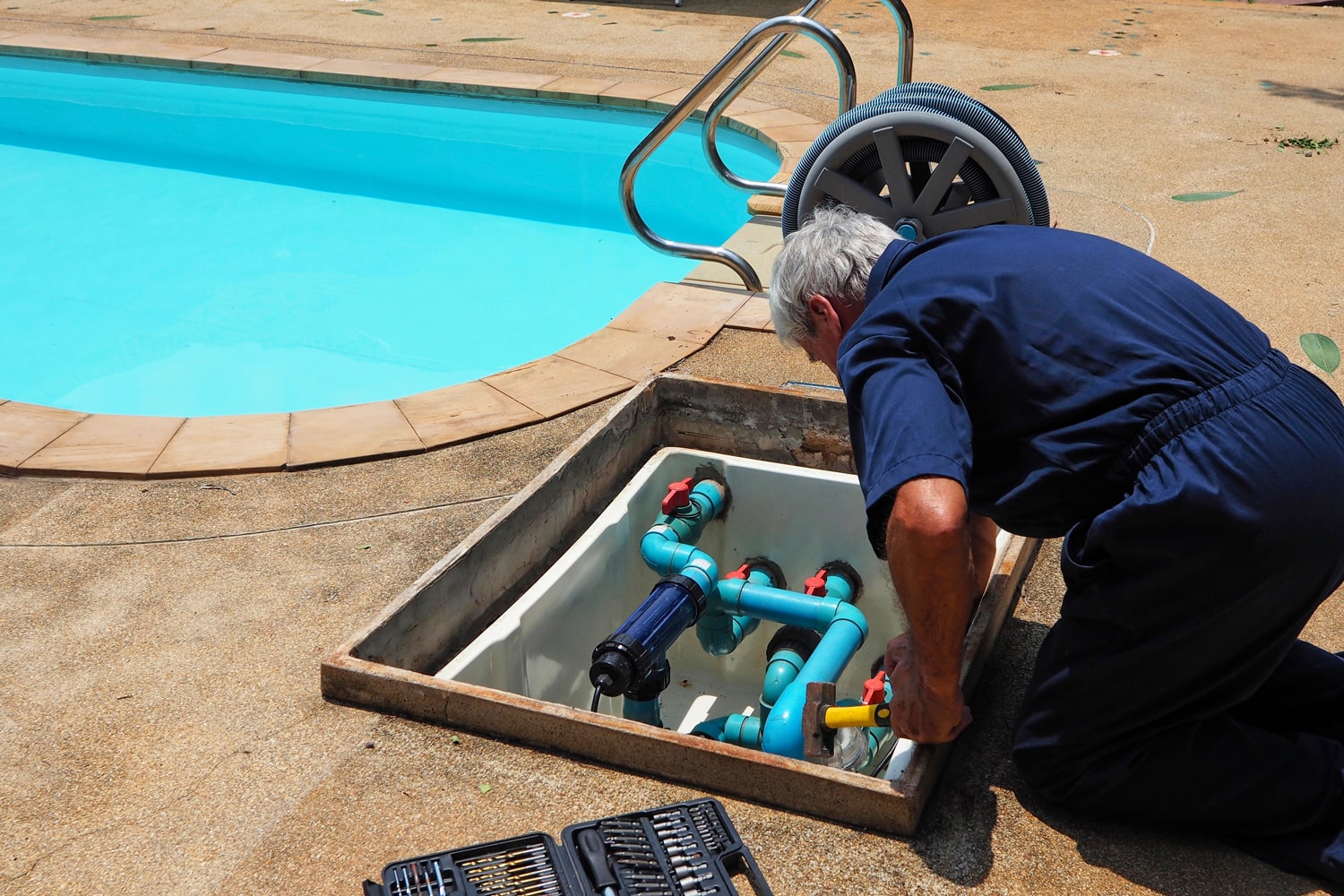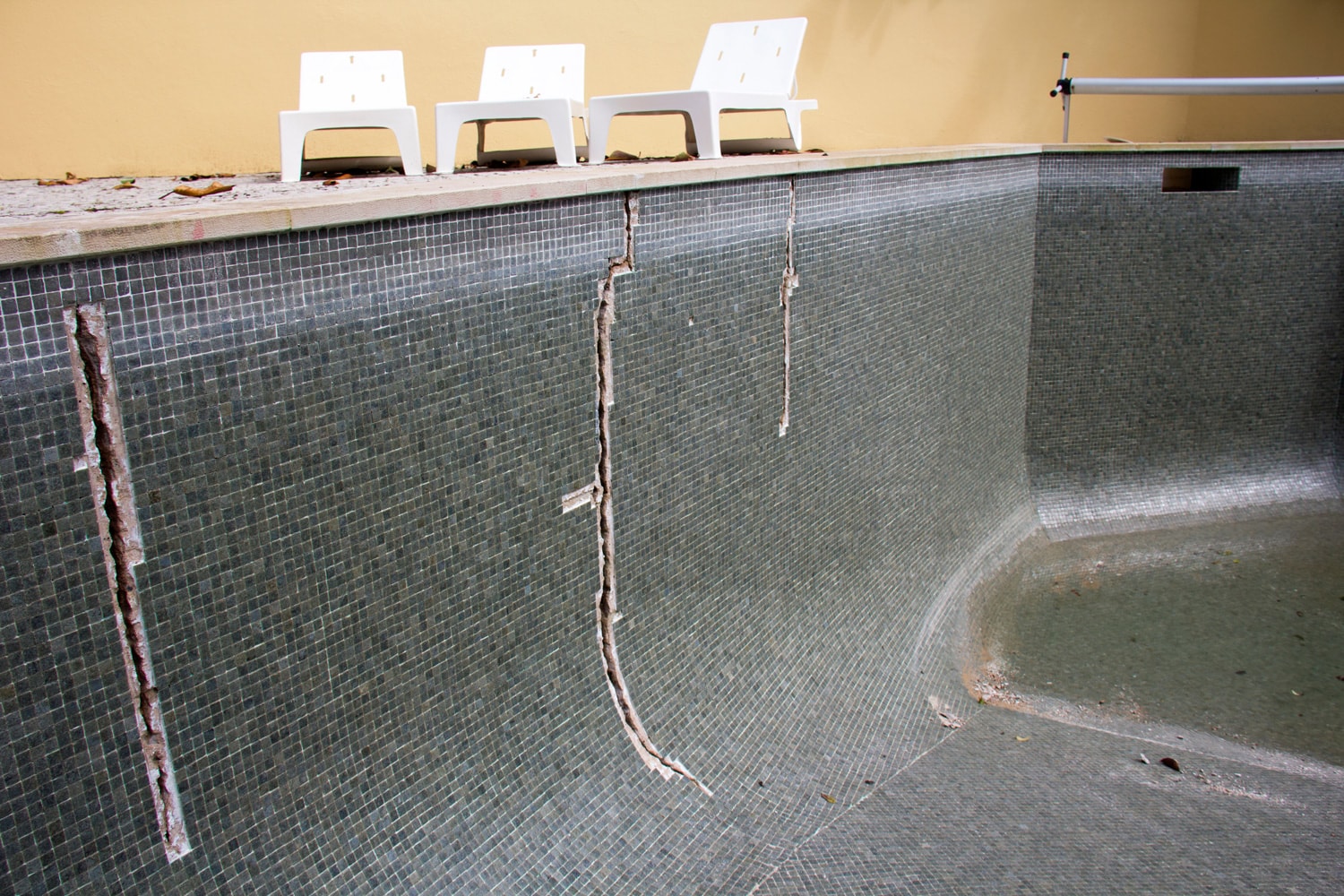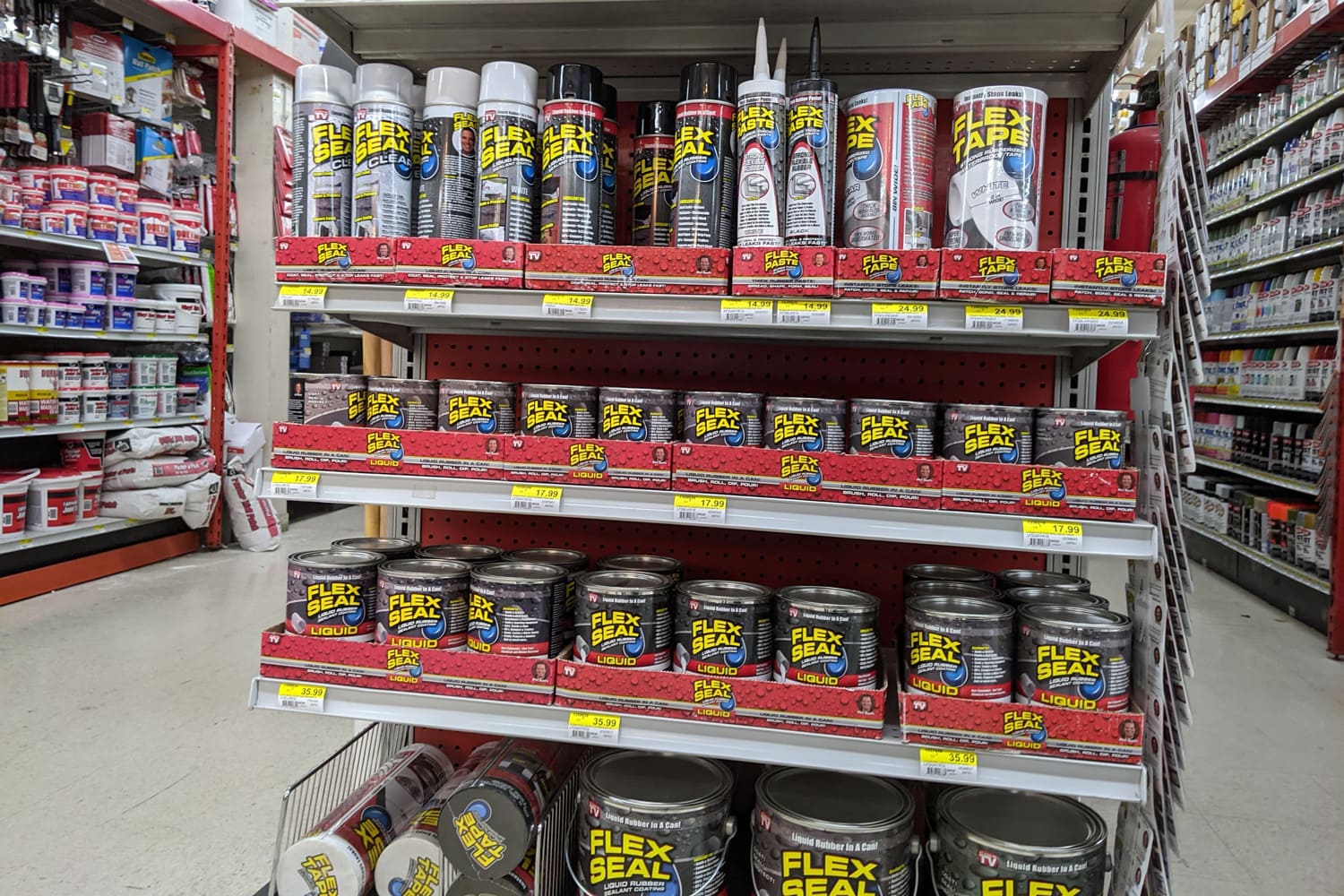You probably don't spend much time thinking about pool leaks, but they can cost you thousands of dollars in damage and repairs. If you're curious about whether Flex Seal Liquid can fix a leaky pool, we've taken the time to investigate!
Flex Seal Liquid does work on pool leaks, but you should be aware that it's not a permanent fix. It is only recommended for structural leaks. For other types of leaks like suction and pressure leaks, it is highly recommended that you call your local pool repair service.
You may think of Flex Seal Liquid as a wonder putty that can work miracles on any leaky surface, but there are a few things you should know. If you want to be sure you are making the right decision, continue reading!

Can Flex Seal Liquid Fix Pool Leaks?

There are many reasons why you might have a pool leak. It may have been caused by an accident with the pool lining. It could be the result of a faulty pool pump, or it could be due to an ongoing problem with the skimmer.
Whatever the reason, it's human nature to try to think of a quick fix to address the problem, and sealing the leak with Flex Seal Liquid is one option.
Unfortunately, Flex Seal can only be used to patch leaks that are structural in nature. For other types of pool leaks, there is no guarantee that Flex Seal will work on them, since the cause of the leak is in the pool system itself.
Besides, you may be required to replace some faulty parts even if the damage is minor.
Types of Pool Leaks
To help you narrow down the problem, it's important to understand what kind of leak you are dealing with. The three most common types of pool leaks are:
1. Suction Leak
Before we proceed to discuss what a suction leak is all about, we should first learn about the pool water distribution system. We'll learn what skimmers are and what suction-side tubes do relative to water distribution in your pool.
Skimmers are designed to draw the water from the pool. Suction-side tubes are designed to pull the water out of your pool toward the pump. Each of these tubes has a different purpose.
Skimmers work by sucking the water from the pool and directing it into the pool's filter. There it will be cleaned before it is returned to the pool. Skimmers are commonly found in large, in-ground pools.
On the other hand, suction-side tubes are usually connected to the filter system of your pool. These tubes draw the water from the pool bottom and deliver it to the pump.
The function of the pump is to circulate the water in the pool. The pump sends the clean water back to the pool from its filter system. It is connected to the filter system with a small hose that goes over the pump.
Needless to say, the pump is located in a secured area of your pool. Some pools have as many as 2 pumps, and both of them are connected to the same filter system.

Difference Between Skimmers and Suction Tubes
The primary difference between the two is that skimmers filter the pool water from debris as it passes through the skimmer basket.
Suction-side tubes are not part of the filtration process. In contrast, their purpose is to move water as a whole throughout the water distribution process. Suction-side tubes only assist in the filtration process by moving water to the pump for filtration.
Suction leaks happen when there is a leak in the tubing that connects to the pump. A leak in the suction line can be caused by a worn or damaged coupling, or by a faulty connection at the suction's end.
It can be easy to detect a suction leak because you'll see bubbles coming out of the pump. When you see bubbles in your pool pump, you can turn the pump off and allow the water to slowly find its way out of the suction tubes through the cracks.
When you shut off the pump and allow the water to come out of the pipes, you have to keep an eye on which part of the pipe is dripping water. You can do this to confirm where the bubbles were coming from.
If the water comes out very slowly, you have a leak. You would need to drain the pool completely so see where the drip is coming from.
2. Pressure Leak
Leaking from your pool pump is one of the most common pool problems. When you pump water into your swimming pool, it’s through the pipes that water traverses from the pump to the pool. If any of those pipes develop a leak, you’ll see changes in the water level.
The pool pump uses a certain amount of power to push the water through the pipes, and it can’t do that while there’s no pressure moving through the pipes.
There are several potential causes to this problem. Pipes can deteriorate over time, and some of them are more likely to leak than others. This can greatly affect the amount of water pressure in your pool system.
Another possible cause of leaks is debris that builds up in the pipes. Water is pushed through the pipes, and anything that gets caught in the way can slow down the flow of water. So it is important to regularly inspect your pipes to ensure that you are not getting clogs.
3. Structural Leak
For concrete pools, structural leaks are caused by deterioration of the basic structures that make up a pool and are often accompanied by cracks, fissures, and other physical damage.
They can occur over a period of years and may not be easily detectable during a visual inspection.
To fix a structural leak in a concrete pool, it is necessary to identify and isolate the leak to determine its source and extent. The leak can be repaired by patching the area where the leak is located or filling in the area with a putty.
This is where Flex Seal Liquid comes in handy.

Types of Structural Leaks
Pools require repair at some point, whether it be to fix a leak or to replace a worn-out part. Leaks can happen when your pool is under the extreme stress of freezing temperatures and melting ice, or they can happen from the wear and tear of everyday use.
A pool can be made of concrete, fiberglass, or vinyl. A structural leak can happen when the pool material has been sitting too long or when the material has been damaged by something heavy hitting it or a pointed object piercing through it.
Here are some pool structural leaks that can be temporarily remedied by Flex Seal Liquid:
-
Skimmer leaks
-
Light leaks
-
Liner leaks
You should contact a professional as soon as you notice a leak. The first thing to do is to stop the leak, and then determine where it is coming from. Is it a crack in the pool, or is it a hole in the pool's liner? Once you've determined the source, it is time to fix it.
Click here to see this Flex Seal paste on Amazon
How to Apply Flex Seal Liquid

Here are some steps to follow when applying Flex Seal Liquid on structural leaks:
1. Open the lid of the can
Lift the lid of the can open and gently stir the Flex Seal. You will feel its rubbery consistency as you stir it. Avoid shaking the can.
2. Apply Flex Seal Liquid with a brush
Use a brush (or you can even use your hand) to apply Flex Seal Liquid to the area that is leaking. It should be applied around the entire perimeter of the leak and then smoothed into the cracks.
3. Move the remaining Flex Seal Liquid to a more secure container
It is ideal that you transfer the leftover Flex Seal Liquid to an airtight container to maintain freshness. You can watch the video below to see Flex Seal Liquid in action:
In Closing
A liquid rubber sealant like Flex Seal is a popular product for pool leaks. It's easy to use, and it's made from liquid rubber, which means it's completely safe for swimming pools. This product is commonly used because it's cheap and easy to apply.
While Flex Seal Liquid is not always recommended for pool leaks as a long-term fix, it can be used as a band-aid solution to instantly fill cracks and crevices in pools for those times when you can't wait for the repair process to be completed.
You can purchase Flex Seal at a home improvement store or even your local hardware store. Make sure that you know what you're doing and apply it correctly.
You might find this related article interesting:
How To Insulate Swimming Pool Pipes

